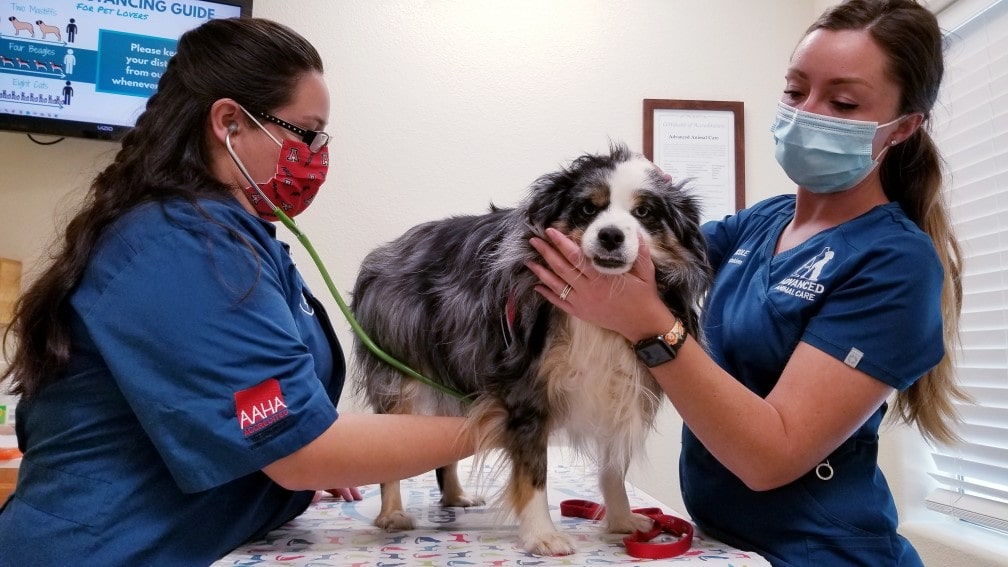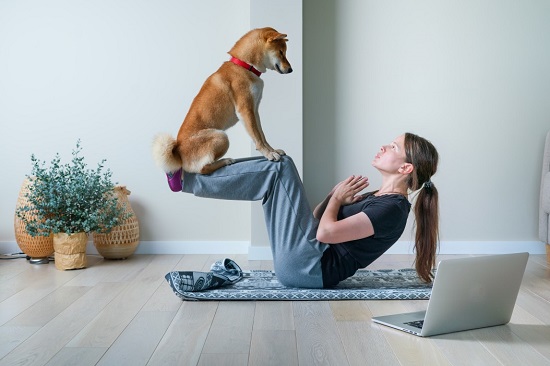The offices of veterinary doctors have less traffic during mid-morning such as 10 am, and mid-afternoon, such as 2 pm. It happens during the weekdays. If you have a nervous dog, you can take your dog to visit the vet at these times. You can be sure your dog would feel less anxious because fewer animals and people would be there then.
Taking someone along with you
When you take your dog to the vet, you can take other people with you. This way, one of you can stay in the car or outside the clinic with the dog while the other person goes in and completes the necessary formalities.
When the appointment ends, you can take the dog to the car or outside the clinic while the other person completes the checkout formalities.
Give a special treat to your dog.
McDonald’s is making a kid-size cheeseburger, and dogs love it. So, when taking your dog to the vet’s chamber, you can pick one of these. While you are on the way, make small pieces and give them to your dog.
This special treat should be reserved when you take them to the vet. Give them pieces of the actual cheeseburger when they enter the office. It should also stop the moment you come out of the chamber.
Consider taking pre-treatment
You can ask your vet if you can administer some pre-treatment, such as anti-anxiety medicines, before you take your dog to the vet. The doctor might prescribe some medications a couple of hours before the visit. These medicines would help your dog relax during the stay.
Read Also: All You Wanted To Know About The Costs Of Vet Visits
Some rules to be kept in mind in these cases
There are a few rules you need to follow. Especially when you take your dog to the vet, and if they are afraid of the same, you can consider ways to keep it calm. Could you make sure people working at the clinic only look at, talk to, or touch your dog if necessary? It includes the doctor as well.
Yes, this is a significant point in this context. Even the slightest attention could prove problematic, no matter how good the intentions behind the same are. So, a nervous dog gets nervous when they get attention. So, medical staff must not approach your dog unless it’s essential to do so for an examination.
It is okay if the people working over there treat your nervous dog. It is just that they should throw the treat next to them or behind them. A lot of anxious dogs do like treats. However, they do not like people coming close to them.
Taking them on happy visits
These are great ways to eliminate your dog’s fear regarding visits to the vet’s chamber. Happy holiday essentially means you take them to the clinic, and good things happen – ones that they like. It means there is no treatment or examination.
You do not want any employee working over there or the doctor to make any fuss about your dog’s visit at that time. You want them to experience the place at their convenience. Treats can be a good part of the experience as well. It is always better to let the doctor know you will be coming with your pup for a happy visit.
Using the side entrance
Most clinics have a side entrance to bypass the lobby area and go straight to the doctor’s chamber. Now, the lobby area is one area your nervous dog would be afraid of. So, in that case, you can always use the side entrance when taking them to the doctor. You can also do the same thing when coming out from over there.
Checking with the vet for Fear Free certification
Before you visit the vet, have you been certified by Fear Free or not? Now you may be wondering what Fear Free is. It is an organization formed in 2016. Fear Free educates veterinary doctors and the support staff working with them to handle the condition of nervousness in animals.
The organization offers training to everyone working in such an establishment. So, if you are taking your baby to a new clinic, you should find out about this beforehand.
Read Also: How to Find a Vet: 10 Key Questions You Should Ask
Dealing with aggressive dogs
Does your dog indulge in aggressive acts such as biting during these visits? If it is, you need to use muzzles on them before getting into the clinic for examination or treatment. There are several benefits of such a step. First, it ensures they do not end up biting anyone.
It puts the people working at the office at ease. It can have a calming effect on your baby as well. Whenever people see a muzzled dog, they stay away from them. It is just what such a dog wants.
Dealing with the negative experiences of your dog
At times, your dog may have had so many negative experiences of visiting a vet’s office. Hence, that was a painful experience for them to do it again. Usually, no people working there or even the doctor are responsible for such a situation.
It is just that your dog will never be comfortable over there. So you can incorporate the ideas we have discussed in the piece. But make sure you are consistent and careful to keep your pet calm.
Conclusion
By employing gradual desensitization, positive reinforcement, and creating a calm environment, you can help your dog overcome their fear of visiting the vet. Patience, consistency, and a trusting relationship with your veterinarian are key. With your support, your dog can positively associate with vet visits, ensuring their well-being while minimizing anxiety.
FAQs
Q: How long does it typically take to help a dog overcome their fear of visiting the vet?
A: The duration required for a dog to overcome their fear varies based on the specific dog and the extent of their anxiety. It may take weeks or even months of consistent training and positive experiences to see significant progress. Patience and consistency are critical during this process.
Q: Are there any specific techniques or training methods that work best for reducing a dog’s fear of the vet?
A: Gradual desensitization and counter-conditioning techniques are commonly used to help dogs overcome their fear of the vet. This involves exposing the dog to gradual, controlled, and positive experiences associated with the vet chamber. Utilizing positive reinforcement, including treats and praise, plays a crucial role in rewarding calm behavior and fostering trust. You can consult a professional dog trainer or behaviorist for personalized techniques tailored to your dog’s needs.
Q: What if my dog’s fear of the vet doesn’t improve despite my efforts?
A: If your dog’s fear of visiting the vet persists or worsens despite your efforts, it’s advisable to seek professional help. Could you consult with a veterinarian who specializes in behavior or a certified dog behaviorist? They can assess the situation, provide guidance, and recommend additional strategies or interventions to address your dog’s needs.
 DogExpress
DogExpress





















 in Chandigarh, India.
in Chandigarh, India. 

